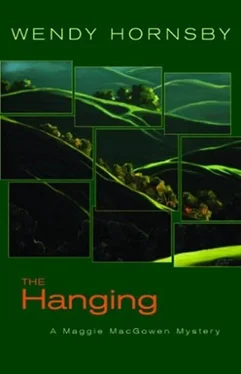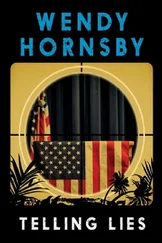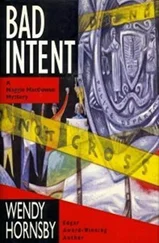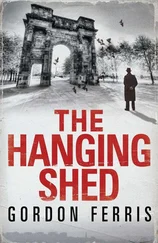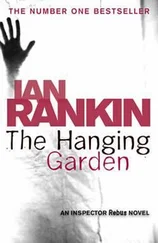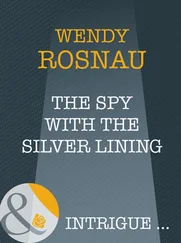The piece was beautiful, subtle and complex. At a distance it would be a colorful, ever-moving organism. Up close, a mosaic of historic tableaux, each one exquisite by itself.
Max was distracted as Sly explained his work.
“Where’s that damn bird that flew in?”
“The dove is an illusion, Max,” Sly said, grinning. “Or maybe it’s a ghost.”
Max looked at him through narrowed eyes, not amused.
“Optics, Max,” Sly said. He reached into the unfinished piece and tapped a tiny crystal. As the crystal moved, it picked up light and made the dove fly around the room.
“That’s why I call it Palomas Eternas , Eternal Doves. People come, they go. But the birds are constant. Borderless. Eternal.”
“It’s something, kid.” Max started on a circuit of the sculpture, comparing the series of sketches affixed to the wall with the work in progress. “It’s really something.”
Sly followed him, answering questions, pointing out details.
Bobbie moved a step closer to me as she watched Max and Sly. “Kate tells me you’re very close to Sly.” It sounded like a question. She was smiling, but I had a feeling that the smile was cover for something weighing on her.
“I’ve known Sly since he was a little boy,” I said.
“He thinks of you as family.”
I smiled and nodded. “Mike and I, and our kids-his son, Michael, my daughter, Casey-were certainly the closest thing to family Sly had ever known.”
Sometimes people questioned why Mike and I had not adopted Sly or taken him in as a foster child. The answer that I never bothered to give them, because it really was no one’s business but our own, was that when I took Sly in off the streets, his problems were larger than Mike and I knew how to handle.
All the years that Sly was a ward of Los Angeles County, Mike watched over him, watched over Child Protective Services to make sure that Sly received everything he needed, and that he came to no harm. Mike had no authority to oversee Sly’s foster placements, or to drop in to visit without prior notice, but he did. He also had no authority to set up extra counseling sessions when Sly reached the county’s set quota, but he did that, too. Most kids in the System don’t have a Mike to look after them, but they all need one.
Before Mike made detectives, he was an old-time LAPD street cop, a cowboy. Because of that experience, until the very end of his life he generally found ways to get things done, his way. If anyone with Child Protective Services took issue with Mike’s buttinski ways, they didn’t get very far with their grievance.
Bobbie turned away from Max and Sly, who were on the far side of the gallery, to speak with me again.
“Kate told me you were meeting with Park Holloway this afternoon to set him straight about the installation of Sly’s work.”
“We met.”
“It came out well?”
“It did.”
She glanced around to see where the men were.
“I learned something very disturbing,” she said. “I thought that because you are so close to Sly…”
I said, “Something about Sly?”
“Only indirectly.” Again she checked to see where he was. My palms were sweaty and my heart raced; with Sly, you never knew what was coming next. She cleared her throat. I interrupted before she could say anything.
“Bobbie, I know where we can get a cup of coffee.”
“Let’s.” She took my elbow and we started walking.
Lew Kaufman kept the makings for coffee in a small faculty lounge about halfway between his office and my studio. The room was well-used and ill-tended, furnished with mismatched chairs and an old Formica-topped kitchen table. Everything was spattered and smeared with representatives of every imaginable art medium: clay, paint, plaster, chalk and charcoal among them. The place smelled vaguely of turpentine. But the room was quiet and the coffeepot was a very good French press.
While Bobbie searched for a chair with four intact legs, I filled and plugged in the kettle, ground some beans and measured them into the press. From the selection of mugs on the counter next to the sink, I found the two that were the least stained and rinsed them with kettle water when it began to steam.
“You said you learned something disturbing?” I leaned against the sink, facing her, while I waited for the water to boil.
She nodded, took some time before she spoke.
“At the meeting with Park, did he agree that he had no authority to change the terms of the award?”
“Reluctantly, but yes,” I said.
“What Park tried to do was unconscionable. Even if he didn’t get away with it, the attempt was still a terrible insult to Sly.” She looked up at me. “How is Sly doing? I hesitated to ask him because I didn’t-I don’t-want to upset him.”
“He was very hurt,” I said. “It still stings. But you can talk with him about it. The kid may be more resilient than you think.”
She smiled as she said, “He’s very fond of you and your late husband, you know. And your son.”
“Michael. My stepson, actually.”
“He told me he had a room of his own at your house.”
“He did until he got his own apartment in Anacapa. But he only ever stayed with us on weekends and school holidays.”
“Where was his family?”
The kettle whistled so I turned and busied myself pouring water over coffee grounds and fussing with the plunger. My friend Kate was very fond of Bobbie, had spoken of her several times. I knew that Bobbie’s influence was in no small part responsible for the selection of Sly’s sculpture. But what she was asking about Sly’s personal history was Sly’s story to tell, not mine.
I placed a mug of coffee and a jar of powdered creamer on the table beside her and found a chair with at least three fairly stable legs and brought it to the table.
I sat back and looked at her for a moment, collecting my thoughts before I said, “Sly has never known his biological family.”
She declined the creamer-I didn’t blame her, it did look a bit chunky-and sipped her coffee, eyes focused on something far away. When she said, “Damn the man,” the words came from deep down inside; I knew to whom she referred. “He had no right.”
Her pretty face was tight with indignation when she turned it toward me. “I knew Park was up to something, but I didn’t know what it was. And I should have guessed. He is such a schemer.”
Bobbie rose and paced across the room, obviously upset. After a few deep breaths, a bit more composed, she came back and took her chair again. Setting her coffee aside, she leaned toward me.
“In any community,” she said, “there are certain go-to people, for money, for volunteers, for whatever. Kate and I are go-to’s whenever money is needed. Or, in this case, wanted. Park went to both of us last fall, after the committee had selected Sly’s work, and asked for us to contribute to a backup fund in case Sly failed to produce his piece; it is an ambitious work, even for a more experienced artist.”
“What did you say to him?”
“We said no, of course,” she said firmly. “It wasn’t a secret that Park was not pleased that Sly won the sculpture award. But it was just stupid of him to ask me for money for a runner-up award, so to speak.”
“You weren’t worried that Sly could get the piece made?”
“There was some concern among the committee about whether Sly could pull it off,” she said. “But Lew Kaufman, who sat on the committee, of course, assured everyone that Sly had the backing of the entire Art Department as well as access to all of its resources. Sly needed them, and he used them. His application was given weight because it would involve so many people across the campus.”
“Does Holloway have something against Sly or Sly’s work?”
Читать дальше
